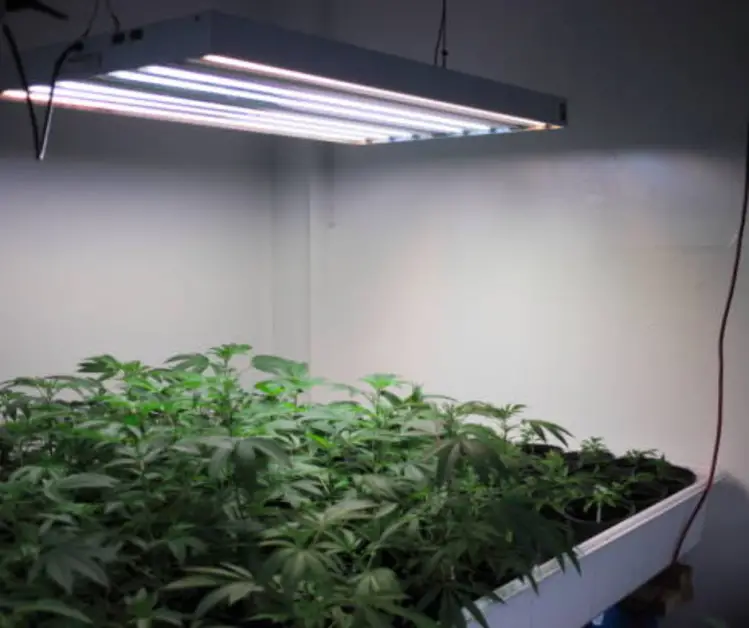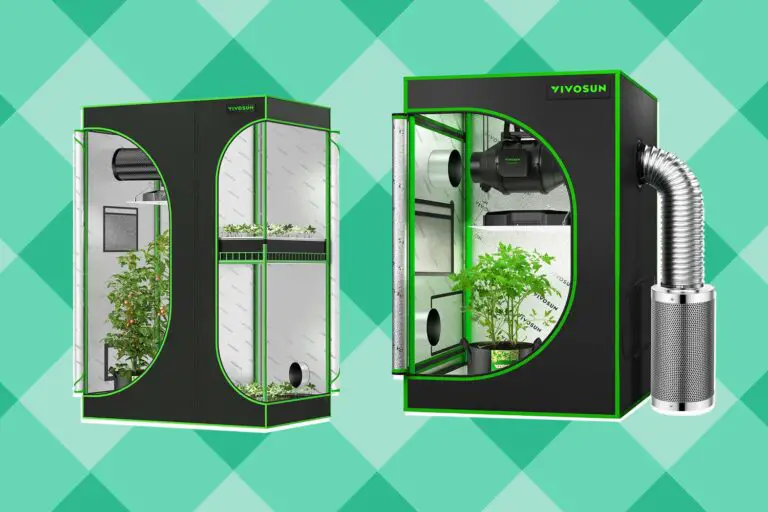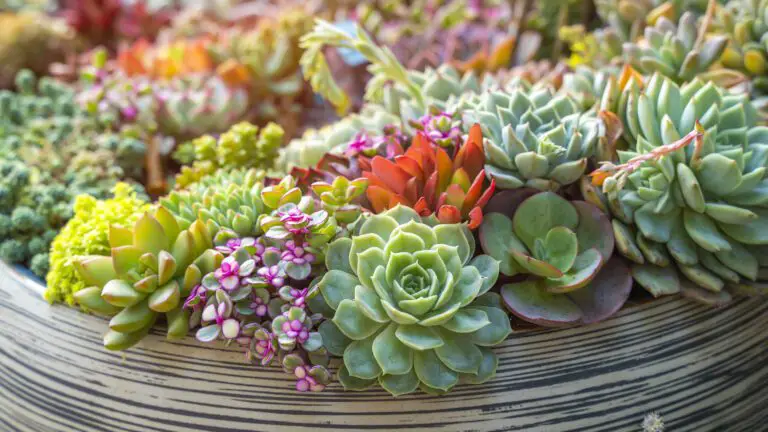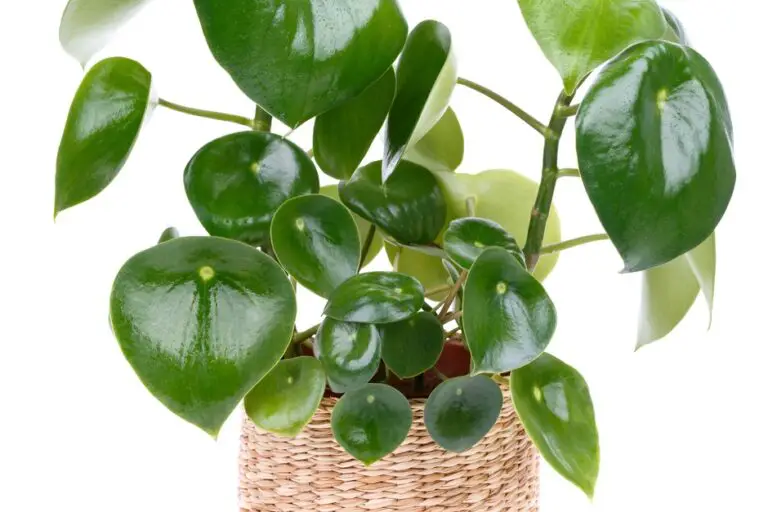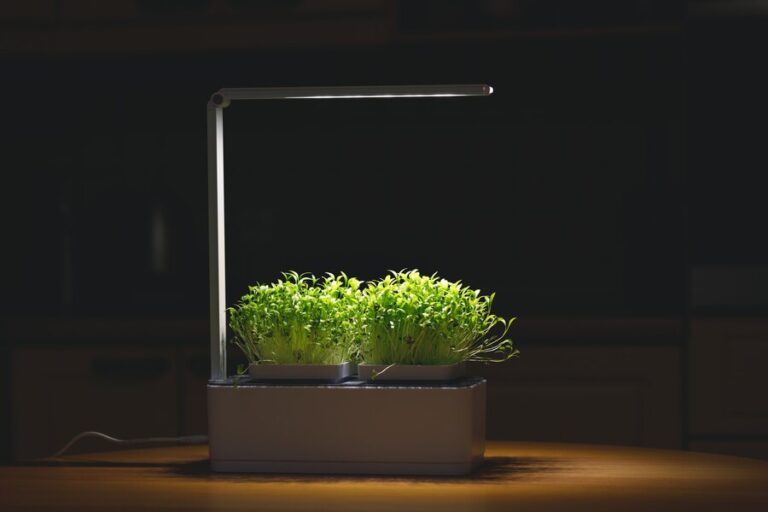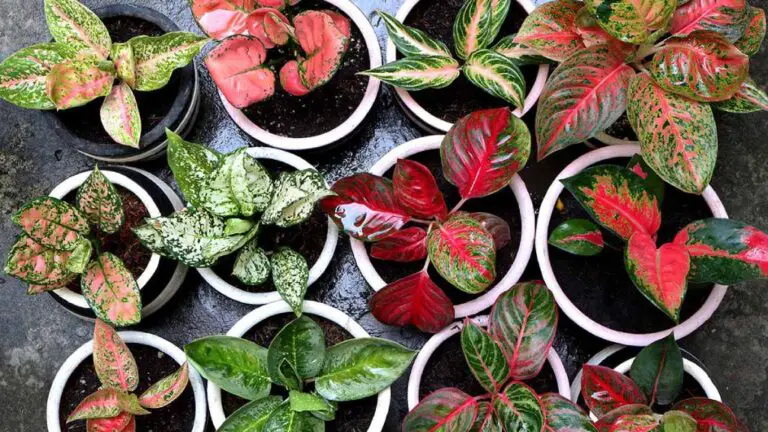Top T5 Grow Lights for Indoor Gardening
Table of Contents
Understanding the Importance of Grow Lights in Indoor Gardening
Grow lights play a crucial role in indoor gardening, providing plants with the artificial light they need for photosynthesis and growth. In environments where natural sunlight is limited or inconsistent, such as in basements or during winter months, grow lights are essential for maintaining healthy plants. They are designed to mimic the spectrum of sunlight, providing the optimal wavelengths of light needed for different stages of plant growth.
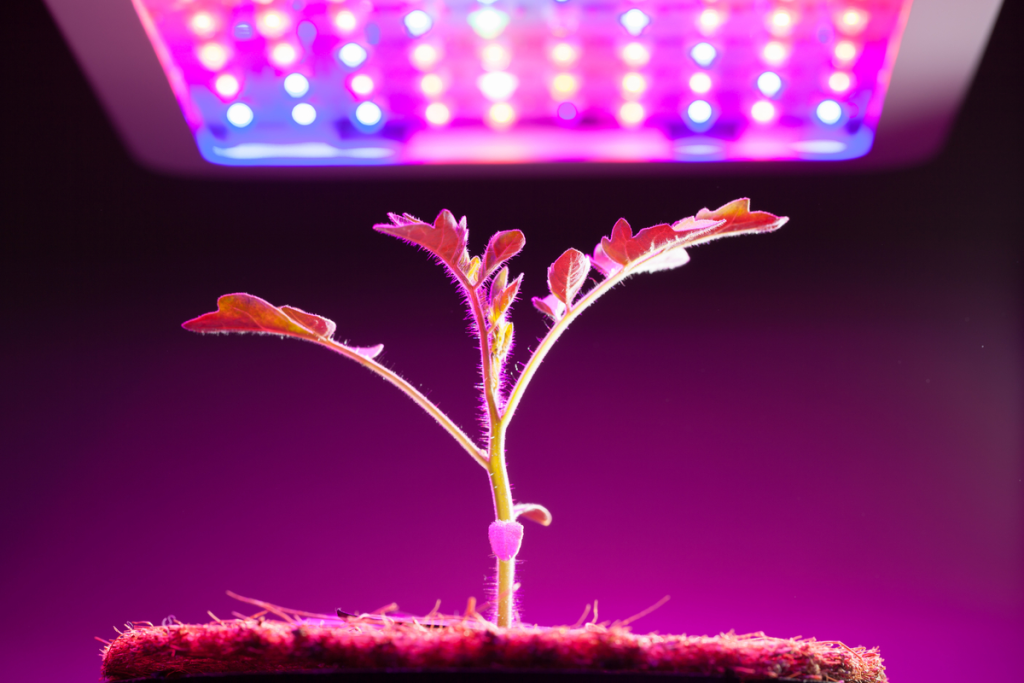
One key advantage of using grow lights is the ability to control the light intensity and duration. By adjusting these factors, gardeners can optimize plant growth and tailor it to specific plant species. This allows for year-round cultivation and the ability to grow a wide variety of plants, including those that require more light than what is naturally available. With the right combination of light intensity, duration, and spectrum, indoor gardeners can achieve healthy, vigorous plants that produce abundant yields.
Factors to Consider When Choosing Grow Lights for Indoor Gardening
When it comes to choosing the right grow lights for indoor gardening, there are several factors that need to be considered. One of the most important factors is the type of plants you will be growing. Different plants have different light requirements, so it’s essential to choose a grow light that provides the ideal spectrum and intensity for your specific plants.
Another crucial factor to consider is the size of your indoor garden. The size of your space will determine the number and size of grow lights you will need. It’s important to ensure that the lights you choose can adequately cover and provide sufficient light to all your plants. Additionally, you should consider the layout and arrangement of your plants to ensure that light is evenly distributed throughout your garden.
The quality and durability of the grow lights should also be taken into account. Investing in high-quality lights can significantly impact the performance and lifespan of your indoor garden. Look for lights that are built with quality materials and have a long lifespan. Additionally, consider the energy efficiency of the lights, as energy-efficient options can help reduce electricity costs and lessen your environmental impact.
Lastly, it’s crucial to consider your budget when choosing grow lights. The cost of grow lights can vary significantly, so it’s important to find a balance between quality and affordability. Consider the long-term benefits and potential savings that high-quality lights can bring, as they may be a worthwhile investment in the overall success of your indoor garden.
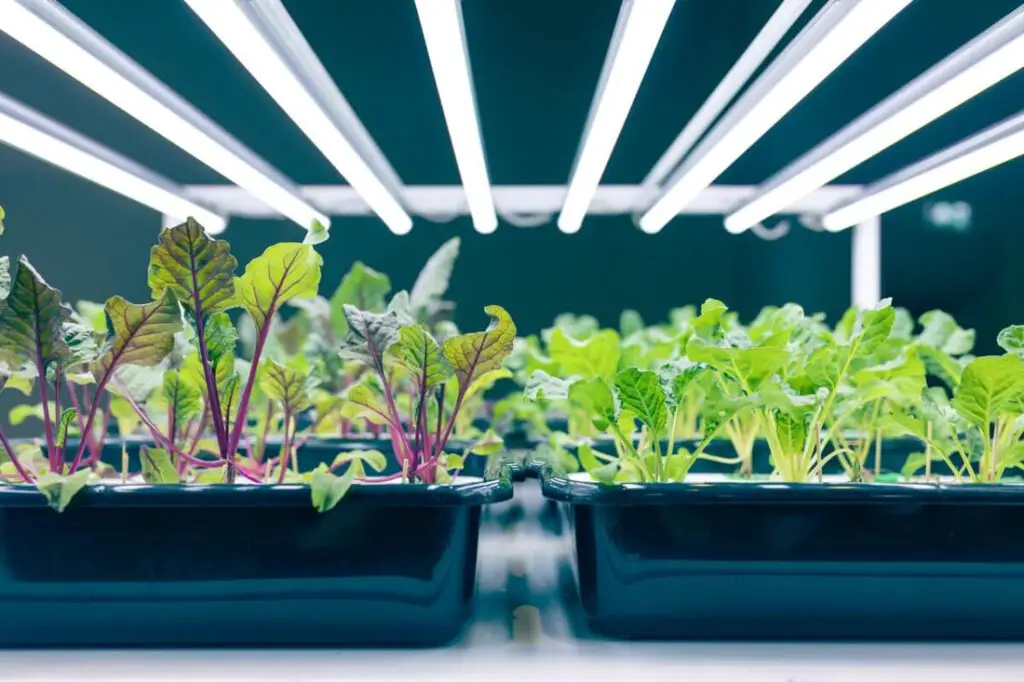
Exploring the Different Types of Grow Lights Available
When it comes to indoor gardening, choosing the right type of grow lights is essential for the success of your plants. There are several different types of grow lights available on the market, each with its own unique features and benefits. One popular option is fluorescent grow lights, which are known for their energy efficiency and affordability. These lights emit a cool white light that is ideal for promoting vegetative growth in plants. They are also available in a wide range of sizes, making them suitable for both small and large indoor gardens.
Another type of grow light to consider is high-intensity discharge (HID) lights. These lights are known for their intense brightness and are particularly effective for flowering and fruiting plants. HID lights come in two main types: metal halide (MH) and high-pressure sodium (HPS) lights. MH lights emit a bluish-white light that is ideal for stimulating leafy growth, while HPS lights emit a reddish-orange light that promotes flowering and fruiting. However, it is important to note that HID lights can generate a significant amount of heat, which may require additional ventilation or cooling systems in your indoor garden.
Overall, exploring the different types of grow lights available can be an exciting and important step in setting up your indoor garden. By considering factors such as energy efficiency, light spectrum, and heat generation, you can choose the best type of grow light that suits your plants’ specific needs. Whether you opt for fluorescent lights, HID lights, or any other type, selecting the right grow lights will play a vital role in ensuring the health and growth of your indoor garden.
| Grow Light Type | Description | Advantages |
|---|---|---|
| Fluorescent | Inexpensive, low-heat, entry-level option | Suitable for seedlings, herbs, and low-light plants |
| High-intensity discharge (HID) | Includes HPS (High Pressure Sodium), MH (Metal Halide), CMH (Ceramic Metal Halide), and HPS+MH | Provides intense light for flowering and fruiting stages |
| Double-ended (DE) | High-output bulbs with increased efficiency | Ideal for professional growers |
| Light-emitting diode (LED) | Energy-efficient, customizable spectrum, long lifespan | Versatile for all growth stages |
| Light-emitting plasma (LEP) | Less common, high-quality light output | Used in specialized applications |
Evaluating the Benefits of T5 Grow Lights for Indoor Gardening
T5 grow lights have gained immense popularity among indoor gardeners due to the numerous benefits they offer. One of the key advantages of T5 grow lights is their energy efficiency. These lights are designed to produce a high amount of light while consuming minimal energy. Compared to other types of grow lights, such as incandescent or fluorescent bulbs, T5 grow lights are much more efficient, making them an economical choice for indoor gardening.
Another benefit of T5 grow lights is their ability to emit a full spectrum of light that closely resembles natural sunlight. This is crucial for the proper growth and development of plants. The balanced spectrum of T5 lights ensures that plants receive the necessary wavelengths of light to carry out photosynthesis effectively. Additionally, T5 grow lights provide a uniform distribution of light, reducing the chances of shaded areas and promoting even growth across all plants in the indoor garden.
Moreover, T5 grow lights emit less heat compared to traditional grow lights, making them ideal for indoor gardening. The low heat output of T5 lights minimizes the risk of damage to plants and allows gardeners to grow a wider range of plant species without worrying about heat stress. Additionally, the reduced heat output means less energy is required for cooling the growing environment, further saving on energy costs.
Overall, T5 grow lights offer an excellent combination of energy efficiency, balanced spectrum, and minimal heat output, making them a preferred choice for indoor gardening enthusiasts. With these benefits, plants can thrive and flourish under T5 lighting, providing gardeners with the opportunity to create vibrant and healthy indoor gardens.
Comparing T5 Grow Lights with Other Popular Options
T5 grow lights have gained significant popularity in recent years due to their many advantages over other popular options. One of the main benefits of T5 lights is their high efficiency, which results in greater energy savings compared to traditional fluorescent lights. In fact, studies have shown that T5 grow lights can provide up to 50% more light output while using the same amount of energy. This not only helps gardeners save on their electricity bills but also reduces the overall environmental impact.
Another advantage of T5 grow lights is their compact size and versatility. Unlike bulkier alternatives like high-pressure sodium (HPS) lights or metal halide (MH) lights, T5 lights are lightweight and can be easily installed in any indoor gardening setup. They also emit very little heat, which eliminates the need for additional cooling systems and allows plants to be placed closer to the lights without the risk of damage. Furthermore, T5 lights can be used throughout the entire plant growth cycle, making them suitable for both seedlings and mature plants. This flexibility is particularly advantageous for gardeners who wish to grow a variety of crops in one indoor space.
Overall, when comparing T5 grow lights with other popular options, it becomes clear that T5 lights offer a wide range of benefits that make them an excellent choice for indoor gardening. From their energy efficiency and compact size to their versatility and suitability for all growth stages, T5 lights provide a superior lighting solution for gardening enthusiasts. As we delve further into the subject, we will explore specific comparisons between T5 grow lights and other options to help you make an informed decision for your indoor garden.
Assessing the Spectrum and Intensity of T5 Grow Lights
When it comes to indoor gardening, the spectrum and intensity of grow lights are crucial factors to consider. T5 grow lights, in particular, are known for providing a balanced spectrum of light that closely mimics natural sunlight. This balanced spectrum includes the necessary wavelengths for both vegetative growth and flowering stages of plants.
In terms of intensity, T5 grow lights offer a high output of lumens per watt, making them highly efficient in delivering light energy to your plants. This means that you can achieve optimal growth and yield without consuming excessive energy. Additionally, T5 grow lights often come with reflectors that help maximize light distribution and reduce wastage.
To assess the spectrum and intensity of T5 grow lights, it is important to consider the specific needs of the plants you are growing. Different plants have varying light requirements, and understanding their ideal light conditions will help you choose the right spectrum and intensity of T5 grow lights for your indoor garden. By ensuring that your plants receive the appropriate spectrum and intensity, you can optimize their growth, development, and overall health.
Understanding the Role of Light Duration in Indoor Gardening
Light duration plays a crucial role in indoor gardening as it directly affects the growth and development of plants. Just like outdoor plants rely on the natural sunlight for photosynthesis, indoor plants depend on the artificial light provided by grow lights. The duration of light exposure determines the amount of energy plants receive and influences their biological processes.
Plants require a certain number of hours of light each day to thrive. This period, known as the light cycle or photoperiod, varies depending on the type of plant and its stage of growth. During the vegetative stage, plants typically need around 14 to 16 hours of continuous light. This extended exposure to light promotes leafy growth and prepares the plants for the flowering stage. Once plants enter the flowering stage, the light cycle is usually reduced to 12 hours of continuous light, replicating the shorter days of the fall season.
Providing the appropriate light duration is essential for maintaining plant health and maximizing yield. Insufficient light exposure can lead to stunted growth, delayed flowering, and poor overall development. On the other hand, excessive light exposure can cause stress, leaf burn, and hinder the plant’s ability to photosynthesize efficiently. Striking the right balance by adjusting the light duration based on the specific needs of your plants is vital for successful indoor gardening.
Tips for Proper Placement and Installation of T5 Grow Lights
Proper placement and installation of T5 grow lights are crucial for achieving optimal growth and health of plants in indoor gardens. Here are a few tips to help you get started:
1. Determine the ideal height: The height of your T5 grow lights from the plants can significantly impact their growth. As a general rule of thumb, keep the lights approximately 12-18 inches above the canopy of the plants. However, always refer to the specific instructions provided by the manufacturer for your particular T5 model.
2. Maintain even coverage: To ensure equal distribution of light, position the T5 grow lights in a way that every part of the plants receives sufficient illumination. Consider using multiple fixtures and spacing them out evenly to avoid shadows or hot spots.
3. Adjust the angle: T5 grow lights emit light in a specific direction, so it’s essential to adjust the angle of the fixtures accordingly. Angling the lights slightly downward can help optimize light absorption by the plants and prevent light from being wasted or lost.
4. Consider plant stage and growth requirements: Plants have different light requirements during various stages of growth – from seedling to vegetative growth to flowering and fruiting. Adjust the height and intensity of your T5 grow lights according to the specific needs of your plants at each stage.
Remember, the tips mentioned above serve as a starting point for proper placement and installation of T5 grow lights. It’s also beneficial to consult reliable resources, such as horticulture experts or the manufacturer’s recommendations, for specific guidance based on the plant species you are cultivating. With proper placement, you can harness the full potential of T5 grow lights and enjoy healthy, thriving plants in your indoor garden.
Maximizing Energy Efficiency with T5 Grow Lights
T5 grow lights are renowned for their energy efficiency, making them an excellent choice for indoor gardening enthusiasts looking to minimize their energy consumption. These lights utilize advanced technology that allows them to convert a higher percentage of electricity into usable light for plants, while generating less heat in the process. As a result, T5 grow lights not only provide optimal conditions for plant growth but also help reduce energy costs.
One of the key factors contributing to the energy efficiency of T5 grow lights is their design. These lights are equipped with high-quality electronic ballasts, which regulate the flow of electricity to the bulbs. This precise control ensures that the lights consume only the amount of energy necessary for plant growth, without any wastage. Additionally, T5 grow lights are armed with efficient reflectors that maximize the distribution of light, further enhancing their energy efficiency.
The energy efficiency of T5 grow lights is also attributed to their unique light spectrum. These lights produce a balanced combination of blue and red wavelengths, which are crucial for photosynthesis. By providing plants with the exact light they need, T5 grow lights eliminate any excess energy expenditure, resulting in optimized energy usage. This not only benefits the plants but also allows growers to maximize their energy efficiency and minimize their overall environmental impact.
Examining the Lifespan and Durability of T5 Grow Lights
T5 grow lights are known for their impressive lifespan and durability, making them a popular choice among indoor gardening enthusiasts. These lights have an average lifespan ranging from 20,000 to 30,000 hours, depending on the specific brand and model. This means that if used for 12 hours a day, T5 grow lights can last for approximately 4 to 5 years, providing consistent and reliable lighting for your indoor plants throughout their lifespan.
The durability of T5 grow lights is another noteworthy feature. These lights are built using high-quality materials that can withstand the rigors of indoor gardening. They are designed to operate under harsh conditions, such as high humidity and fluctuating temperatures, without compromising their performance. With proper care and maintenance, T5 grow lights can retain their efficiency and functionality even after years of continuous use. This makes them a cost-effective investment for indoor gardeners who seek long-lasting lighting solutions.
Addressing Common Concerns about Heat Generation with T5 Grow Lights
T5 grow lights have gained popularity among indoor gardeners for their ability to provide the necessary light spectrum for plant growth. However, some concerns have been raised regarding the heat generation of these lights. It is important to address these concerns and provide accurate information to ensure that gardeners can make an informed decision.
One common concern is that T5 grow lights generate excessive heat, potentially damaging plants or causing energy inefficiency. While it is true that T5 lights do produce heat, it is important to note that they emit significantly less heat compared to traditional HID lights. This makes them a safer option for indoor gardening, especially in small or enclosed spaces. Additionally, T5 lights have built-in heat sinks or cooling systems that help regulate temperature and prevent overheating. These features not only protect the plants but also contribute to energy efficiency by reducing the need for additional cooling mechanisms.
Furthermore, it is important to consider the distance between the T5 grow lights and the plants. Proper placement and installation are crucial to prevent heat-related damage. The manufacturer’s guidelines should be followed to ensure that the lights are positioned at the optimal distance. This will help maintain a balance between providing sufficient light intensity for plant growth and reducing the risk of heat-induced stress. Additionally, proper air circulation and ventilation should be maintained to dissipate any heat that is produced. By implementing these measures, gardeners can effectively address concerns about heat generation and ensure the successful cultivation of their indoor gardens with T5 grow lights.
Optimizing Plant Growth with T5 Grow Lights: Dos and Don’ts
Optimizing plant growth with T5 grow lights requires careful attention to dos and don’ts to ensure successful results. One of the key dos is to consider the light spectrum provided by T5 grow lights. These lights emit a balanced spectrum that closely resembles natural sunlight, which is essential for promoting healthy photosynthesis in plants. Ensuring that the light spectrum covers both the red and blue wavelengths is crucial, as these are the primary colors that plants need for various growth stages. By providing the right spectrum, T5 grow lights help plants develop strong roots, promote vegetative growth, and stimulate flowering and fruiting.
Another important dos is to position the T5 grow lights at the correct distance from the plants. While T5 lights are highly efficient and produce less heat compared to traditional grow lights, they can still cause damage if placed too close to the plants. Ideally, the lights should be positioned about 6 to 12 inches above the plants, depending on their growth stage and light intensity. Regularly monitoring the distance and adjusting as needed can prevent issues such as heat stress or light burn, ensuring optimal growth and development.
On the other hand, one of the key don’ts when using T5 grow lights is to neglect the light duration. Plants require specific exposure times to light, and not providing enough or providing too much can have detrimental effects on their growth. It’s important to understand the light needs of different plant species and adjust the duration accordingly. Generally, most plants require around 12 to 16 hours of light per day for optimal growth. Using a timer system can help maintain the appropriate light duration consistently, providing plants with the necessary light and dark cycles required for their biological processes.
Exploring Additional Features and Accessories for T5 Grow Lights
T5 grow lights are already highly efficient and effective for indoor gardening, but there are additional features and accessories that can further enhance their performance. One important feature to consider is the adjustable hanging system. This allows you to easily raise or lower the lights as your plants grow, ensuring that they receive the optimal amount of light at each stage of their development. Additionally, some T5 grow lights come with built-in timers, allowing you to automate the light cycles for your plants. This is particularly beneficial for busy gardeners who may not be able to manually switch the lights on and off at the appropriate times.
Another accessory that can be useful is a light reflector. A reflector helps to direct and maximize the light output of the T5 bulbs, ensuring that more of the light reaches your plants. This is especially beneficial for deeper and larger grow spaces where light penetration may be an issue. Additionally, some T5 grow lights come with built-in reflective surfaces on the fixture itself, further enhancing the light distribution.
Overall, exploring the additional features and accessories available for T5 grow lights can greatly enhance their performance and improve your indoor gardening results. By opting for adjustable hanging systems and light reflectors, you can ensure that your plants receive the ideal lighting conditions for their growth and maximize the efficiency of your T5 grow lights.
| Feature/Accessory | Description |
|---|---|
| Reflectors | Single-bulb reflectors cover approximately 2 feet by 6 inches to 2 feet by 1.5 feet, while dual-bulb reflectors offer a similar size but can provide around 2.5 feet by 2 feet of light coverage. |
| Ballasts | T5 bulbs require ballasts for proper operation. These electronic or magnetic devices regulate the electrical current and ensure consistent light output. |
| Adjustable Stands | Some T5 fixtures come with adjustable stands, allowing you to customize the height and position of the lights as your plants grow. |
| Timer Controllers | Timers help automate the lighting schedule, ensuring consistent light cycles for optimal plant growth. |
| Linkable Fixtures | Link multiple T5 fixtures together using daisy chains for seamless installation and expanded coverage. |
| Hanging Kits | Kits with hooks, chains, and adjustable cords make it easy to suspend T5 lights at the desired height. |
| Light Movers | Motorized light movers slowly move the T5 fixtures back and forth, distributing light evenly across the canopy. |
| Spectrum Enhancers | Add-on lenses or filters modify the light spectrum, emphasizing specific wavelengths for different growth stages. |
| Light Hangers | Securely hang T5 lights from ceiling hooks or grow tent frames. |
| Light Meters | Measure light intensity (PAR) to optimize placement and ensure consistent levels for plant health. |
Tips for Maintenance and Cleaning of T5 Grow Lights
Maintenance and cleaning are essential for ensuring the longevity and optimal performance of T5 grow lights in indoor gardening setups. Here are a few tips to help you maintain and clean your T5 grow lights effectively:
1. Regularly inspect and dust the light fixtures: Dust accumulation on the light fixtures can reduce the light output and efficiency. It is recommended to inspect and clean your T5 grow light fixtures at least once a month. Use a dry cloth or a soft brush to gently remove any dust or debris from the surface of the fixtures.
2. Check for signs of wear and tear: Over time, T5 grow lights may experience wear and tear, such as loose connections or damaged cables. Regularly inspect the wiring and connections for any signs of damage. If you notice any issues, it is crucial to address them promptly to avoid any electrical problems or safety hazards.
3. Clean the reflectors and lenses: Reflectors and lenses play a vital role in maximizing the light distribution and intensity. Clean them regularly to ensure that they are free from dirt, fingerprints, or any other potential obstructions. Use a mild detergent solution and a soft cloth to gently wipe down the reflectors and lenses. Avoid using abrasive cleaners or rough materials that could scratch or damage the surfaces.
4. Replace worn-out components: T5 grow lights consist of various components, such as bulbs, ballasts, and reflectors. Keep track of the lifespan of these components and replace them when necessary. Regularly check the manufacturer’s recommendations for the lifespan of each component and replace them accordingly to maintain optimal performance. By replacing worn-out components, you can ensure that your T5 grow lights continue to provide the necessary light spectrum and intensity for healthy plant growth.
These maintenance and cleaning tips will help you keep your T5 grow lights in excellent condition for years to come, ensuring optimal performance and successful indoor gardening.
Real-Life Success Stories: Indoor Gardens Thriving with T5 Grow Lights
Indoor gardening enthusiasts have long been reaping the rewards of using T5 grow lights to nurture their plants. These real-life success stories serve as a testament to the effectiveness and reliability of this lighting solution. Gardeners have reported remarkable outcomes, including vibrant foliage, abundant blooms, and larger yields, all thanks to the strategic implementation of T5 grow lights.
One success story that stands out is that of Jane Turner, a dedicated gardener in the heart of the city. With limited space and access to natural sunlight, Jane was initially skeptical about her indoor gardening prospects. However, after incorporating T5 grow lights into her setup, she noticed a significant improvement in her plants. The lush greenery and bountiful harvest she achieved in her apartment were truly impressive. “T5 grow lights have revolutionized my indoor garden. I can now enjoy fresh herbs, vegetables, and even flowers all year round!” exclaims Jane, beaming with pride. Her story serves as an inspiration for aspiring indoor gardeners, showcasing the transformative power of T5 grow lights and their ability to bring nature indoors.
These success stories provide conclusive evidence of the remarkable impact that T5 grow lights can have on the growth and development of plants in indoor gardening setups. As we delve deeper into the world of T5 grow lights, we will explore their features, benefits, and intricacies to further understand how they contribute to the flourishing of indoor gardens. So, let’s continue our journey, uncovering the wonders of T5 grow lights and unraveling the secrets behind their exceptional performance.
Expert Recommendations: Top T5 Grow Lights for Different Indoor Gardening Needs
When it comes to choosing the best grow lights for your indoor gardening needs, T5 lights are a highly recommended option. Known for their efficiency and versatility, T5 grow lights provide an excellent spectrum of light that promotes healthy plant growth. With various brands and models available in the market, it can be overwhelming to make a decision. To help you narrow down your options, we have compiled a list of the top T5 grow lights for different indoor gardening needs.
1. VIVOSUN 4FT 54W T5 HO Fluorescent Tubes: This T5 grow light system is perfect for smaller indoor gardens. With its high-output fluorescent tubes, it provides ample light for seedlings, clones, and vegetative growth. The lightweight and slim design make it easy to install and adjust the height as your plants grow. Additionally, the VIVOSUN T5 grow lights have a built-in reflective hood that maximizes light efficiency and distribution, ensuring uniform coverage across your plants.
2. Hydrofarm FLT44 System for Seedlings and Clones: Designed specifically for germination, propagation, and early plant development, the Hydrofarm FLT44 T5 grow light system is ideal for beginners and experienced gardeners alike. It features four T5 high-output fluorescent bulbs with a total wattage of 216W, providing ample light for healthy growth. The lightweight and compact design of the system make it perfect for smaller spaces, such as grow tents or indoor cabinets.
3. Sun Blaze T5 HO Fluorescent Strip Light: If you’re looking for a versatile T5 grow light that can be used for various stages of plant growth, the Sun Blaze T5 HO Fluorescent Strip Light is an excellent choice. Available in different lengths and wattages, this strip light provides full spectrum lighting that promotes strong and healthy plants. The highly reflective aluminum reflector ensures maximum light output, while the durable housing protects the bulbs from moisture and corrosion.
These are just a few examples of the top T5 grow lights available in the market. Consider factors such as the size of your indoor garden, the stage of plant growth, and your budget when making a decision. Remember to also check the manufacturer’s recommendations and consult with experienced growers or professionals for further guidance.
Are T5 grow lights suitable for all types of indoor plants?
T5 grow lights are suitable for a wide range of indoor plants, including flowering plants, herbs, leafy greens, and vegetables. However, certain plants may have specific lighting requirements that may not be fully met by T5 lights alone. It is always recommended to research the specific lighting needs of your plants before making a final decision.
How long should T5 grow lights be left on each day?
The duration of light exposure depends on the specific needs of the plants being grown. In general, most indoor plants require around 12 to 16 hours of light per day during the vegetative stage, and 8 to 12 hours during the flowering stage. However, it is important to monitor the plants closely and adjust the lighting schedule accordingly to ensure optimal growth.
Can T5 grow lights be used as the sole source of light for indoor gardening?
T5 grow lights can be used as the sole source of light for indoor gardening, especially for smaller plants or in combination with natural sunlight. However, for larger or light-demanding plants, supplemental lighting may be necessary to provide sufficient light intensity and coverage.
How do I properly install and position T5 grow lights?
When installing T5 grow lights, it is important to position them at an appropriate distance from the plants to prevent burning or light stress. Generally, T5 lights should be placed 6 to 12 inches above the canopy of the plants. Additionally, it is recommended to evenly distribute the lights and adjust their height as the plants grow taller to maintain uniform light coverage.
Can T5 grow lights help save energy compared to other types of grow lights?
Yes, T5 grow lights are known for their energy efficiency. They consume less energy compared to traditional HID (High-Intensity Discharge) lights and produce less heat, resulting in lower energy costs and reduced risk of overheating the indoor garden.
How long do T5 grow lights typically last?
The lifespan of T5 grow lights can vary depending on the brand and quality of the bulbs. On average, T5 bulbs can last between 20,000 to 30,000 hours of use. However, it is advisable to replace the bulbs after 18,000 hours of use to maintain optimal light output.
Do T5 grow lights produce a significant amount of heat?
T5 grow lights produce considerably less heat compared to other types of grow lights, such as HID lights. While some heat is generated, it is not typically enough to cause significant temperature increases in the indoor garden. However, it is still important to ensure proper ventilation to dissipate any heat produced.
Are there any additional features or accessories that can enhance the performance of T5 grow lights?
Yes, there are several additional features and accessories that can enhance the performance of T5 grow lights. Some examples include reflectors to maximize light distribution, timers to automate the lighting schedule, and adjustable hanging systems for easy height adjustments. These accessories can help optimize the growth and yield of indoor plants.
How often should T5 grow lights be cleaned and maintained?
T5 grow lights should be cleaned regularly to maximize their efficiency. It is recommended to remove any dust or debris from the bulbs and reflectors every 2 to 4 weeks. Additionally, inspecting the bulbs for signs of wear or discoloration and replacing them as needed is essential for maintaining optimal light output.
Are there any real-life success stories of indoor gardens thriving with T5 grow lights?
Yes, there are numerous success stories of indoor gardens thriving with the use of T5 grow lights. Many indoor gardeners have reported significant improvements in plant growth, yield, and overall health when using T5 lights. These success stories highlight the effectiveness of T5 grow lights in creating ideal growing conditions for indoor plants.

